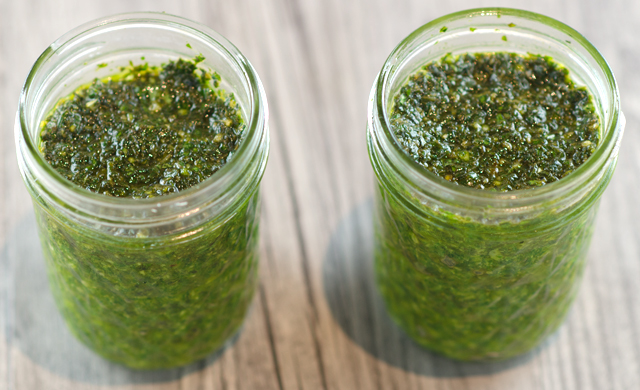 Whether you’ve grown it from seed or purchased your plants at the local home improvement store, those basil plants in your garden are loving the warm temperatures and rain we have been receiving recently. It’s about now that your basil plants have probably sent out spikes of tiny white flowers. Since basil is a true annual, when allowed to flower the plant will go to seed, the leaves will become bitter and your plant will eventually die off. Now is the time to begin harvesting basil leaves.
Whether you’ve grown it from seed or purchased your plants at the local home improvement store, those basil plants in your garden are loving the warm temperatures and rain we have been receiving recently. It’s about now that your basil plants have probably sent out spikes of tiny white flowers. Since basil is a true annual, when allowed to flower the plant will go to seed, the leaves will become bitter and your plant will eventually die off. Now is the time to begin harvesting basil leaves.
As soon as you see that your basil is flowering, pinch them off so the energy in the plant stays diverted to foliage growth. Cutting back your basil plants regularly encourages full, bushy plants. To harvest, cut leaves from the top of the plant, pinch out the top of the stem. This should include small new leaves or a flower stalk and a pair of full sized leaves growing below the tip.
My favorite thing to do with the basil harvest is to make pesto. We have pesto with pasta, as a sauce for vegetables or chicken, as a dip, on pizza, the possibilities are limitless. But, at least in our climate, as soon as the first frost comes, basil is the first victim, the leaves of the plant will turn black and wither. It’s now that you should start preserving that classic taste of summer with freezer pesto.
I have been making this recipe for years now from a classic cookbook of the eighties, Fancy Pantry. Written by former food editor and a three time winner of the Tastemaker award, Helen Witty, Fancy Pantry is a collection of recipes subtitled, “Well preserved, prettily pickled, candied, brandied, potted, bottled, sun dried and otherwise put-by elegant edibles”. My well worn copy attests to it’s usefulness and I recommend it highly.
Mrs Witty attributes this recipe to the late Marcella Hazan. Long before there was Lidia and Mario, there was Marcella. Marcella Hazan was a cookbook author and authority on Italian cooking. My introduction to Italian cooking came through her classic volume, The Classic Italian Cook Book: The Art of Italian Cooking and the Italian Art of Eating and it’s subsequent follow up, More Classic Italian Cooking. My cookbooks written by Mrs. Hazan fall open naturally now to recipes I used countless times. I appreciated her clear and concise recipes written in a voice that was both warm and encouraging.
Her pesto recipe is quite straightforward; mix all the ingredients, basil, pinenuts, garlic, olive oil and a pinch of salt in a blender. Seal tightly and freeze pesto in one cup jars. The cheese or butter as she suggests, should be added right before using it. Most modern recipes call for just Parmesan cheese in pesto. Marcella points out that in Genoa, where pesto originated, they use equal quantities of Parmesan and a special, mildly tangy sheep’s milk Pecorino cheese from Sardinia . That cheese was not available to American cooks when the book was written, back in the seventies. I found several online sources that sell it now. Her solution to the problem then was to use 3 parts Parmesan to 1 part Romano and suggests to adjust this to taste. She states, “a well rounded pesto is never made with all Parmesan or all pecorino”. Point taken.
I make my pesto in 2 cup batches and freeze in one cup glass canning jars with the amount of cheese needed to finish the recipe written on the lid. Plastic freezer containers are fine as well. When I purchase any nuts, I buy from bulk containers and store them in the freezer until I am ready to use them. They thaw quickly and freezing nuts prevents them from going rancid quickly. I often substitute walnuts for the pine nuts, since the more delicately flavored Mediterrannean variety are sold at one local market for 12.99 for four ounces! When Marcella was writing her book, the food processor was still years away from being a commonplace kitchen item. The question for her was whether to make pesto in a blender or with the classic mortar and pestle. She recommends and I concur that everyone should try to make pesto at least once with the mortar and pestle “because of the greater character of the texture and its indubitably richer flavor.”
But Marcella was a practical cook and felt blender pesto was so good that it could be enjoyed “with a clear conscience” whenever there wasn’t time or patience to make pesto in a mortar and pestle. Of course, fresh pesto is always the best but as Marcella said, “since fresh basil has a brief season and pesto keeps quite well in the freezer”, I am going to make enough pesto now to satisfy all those out of season cravings.
Basil Pesto for the Freezer
Makes about 2 cups
Ingredients
- Freshly picked basil, rinsed, leaves stripped off and blotted dry, gently packed down to measure 3 cups
- ¾ to 1 cup of a good quality olive oil
- 3 large cloves of garlic, or more to taste, peeled and chopped
- 3T pine nuts or coarsely chopped toasted walnuts
- ½ to 1 t salt, or to taste
- At the time of use: Parmesan and Romano cheese
Directions
- Combine everything except the cheese in the bowl of a food processor or blender. Turn the motor on and off rapidly, scraping down the sides of the container once or twice, to process the pesto to the texture you like, some prefer smooth, others, a fine chopped mixture.
- Pack the pesto into small freezer containers such as straight sided half pint canning jars, leaving ½ inch of headroom to permit expansion. Seal the containers and store in the freezer.
- To use the pesto: Thaw the amount you’ll need in the refrigerator, if time permits. A cupful is enough for 4-5 servings of pasta. Blend your cheese into the thawed pesto, adding 3-4 tablespoons freshly grated cheese to each cup of sauce. Check the seasoning of the mixture, you may want more salt, depending on the saltiness of the cheese. Use in the recipe of your choice.
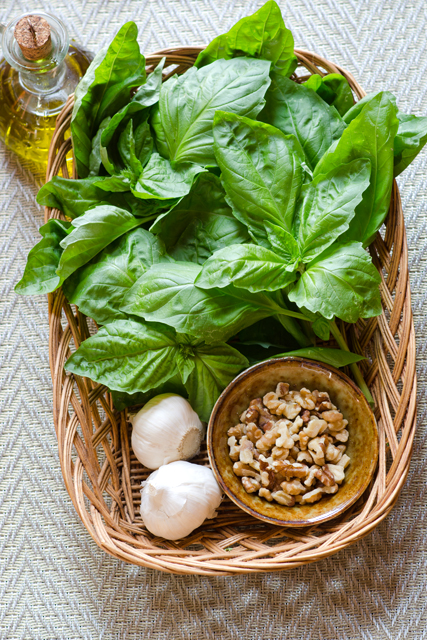
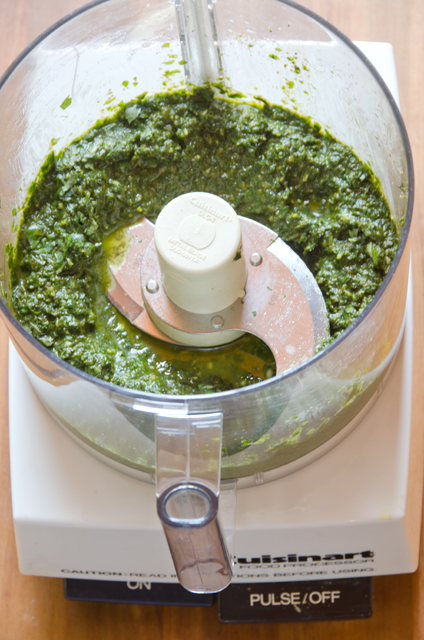
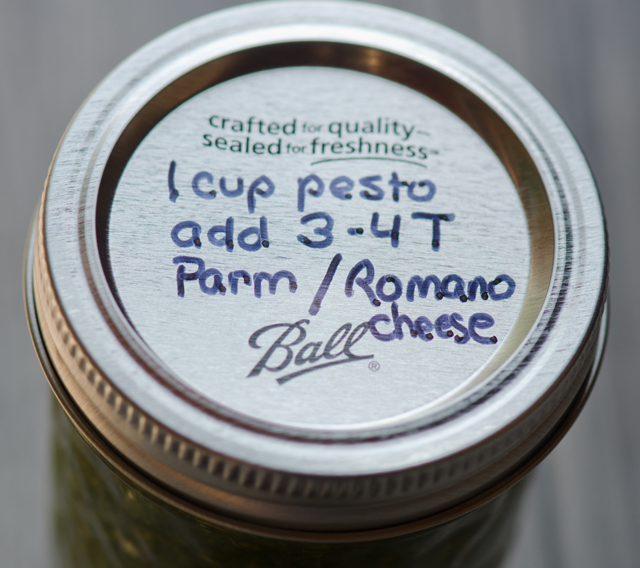
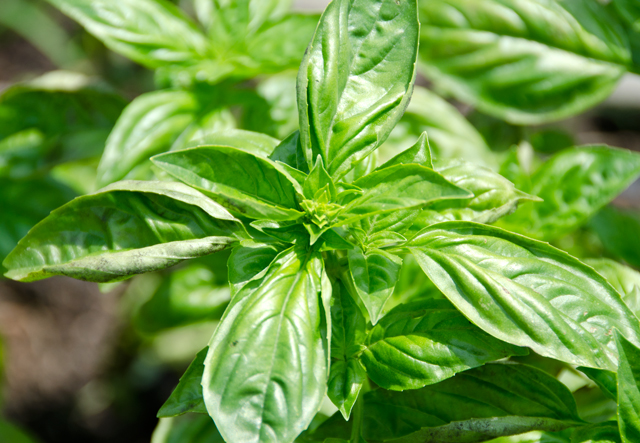

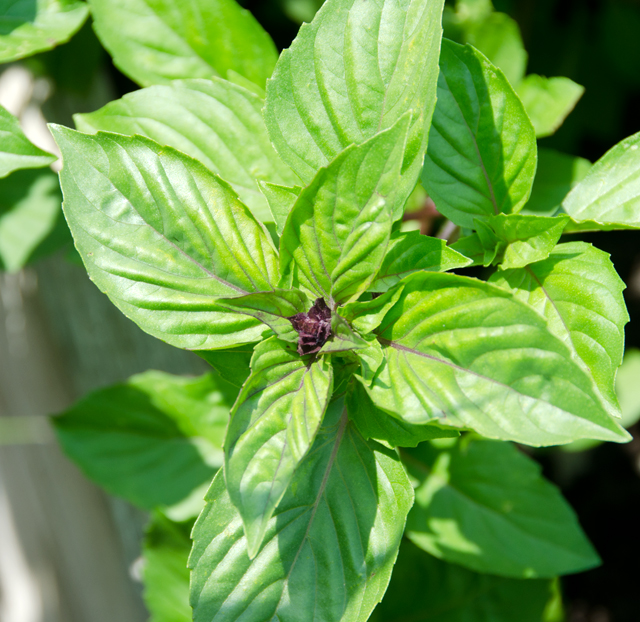
One thought on “July 17, 2015 Pesto for Seasons Without Basil”
Comments are closed.